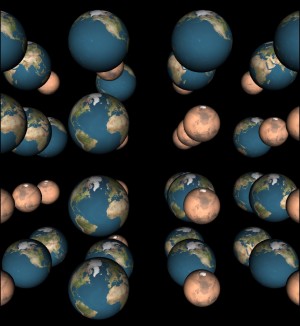The next generation of web technology is on the launch pad; the rate of technological change is about to accelerate again.

The Khronos Group released the final spec of WebGL at the Game Developer Conference this week. But even before the official announcement, the industry has been buzzing about the potential of WebGL. It could be argued that WebGL is the culmination of the work being done in the Khronos—though nobody actually knew it when the group was founded ten years ago. The whole world is moving to the cloud, to the Internet, and so it’s logical the industry’s open graphics standards, OpenGL and OpenGL ES are headed that way as well—in the form of WebGL.
WebGL will enable rich 3D graphics in the browser without the need for a plug-in. It already has solid support from Apple Safari, Google Chrome, and Mozilla Firefox. Mobile browsers are expected to catch up soon. Together, these browsers represent most of the Internet users in the world, and we believe support is going to grow. This is a generational shift for the web and it seems unlikely anyone will agree to be left behind.
While the major browser companies have been the key supporters of WebGL, there is one notable holdout. Yes, that would be Microsoft. So far, Microsoft intends to go their own way. Vladimir Vukicevic, chair of the WebGL working group says that in the case of Internet Explorer, WebGL might be accessible through a plug-in but he also says that the working group has hope that Microsoft will see its way clear to supporting WebGL in the future.
To get an idea of what WebGL can do, check out the official Demo Repository. You may have to upgrade your browser first.

The Khronos Organization says WebGL is HTML, meaning it has been developed as “part of the modern web, the next generation HTML 5.” Essentially, WebGL is the web implementation of OpenGL ES (Embedded Systems) and like OpenGL ES, WebGL enables hardware acceleration. It is accessed via Javascript. What all this adds up to, is considerably more than the sum of its parts. We’re not just talking about spinning chrome tea pots here but full, interactive 3D games, applications accessed within web browsers, and an expansion of the web into new territory. That’s code for: people will be able to put WebGL to work in ways we haven’t thought of yet. Henrik Bennetsen, an ardent proponent of WebGL and developer of OurBricks, an online storehouse of WebGL-based interactive content said, “I don’t think Vlad and [Google engineer] Vangelis Kokkevis and the others did all this work on WebGL so it could be business as usual.”

A group of Google volunteers created the interactive Google Body, which Kokkevis describes as “something like Google Earth” for the body. Another company Mechnicality, Inc. is doing work similar to that of Katalabs. It takes advantage of WebGL and the COLLADA format to store assets and use them online. Increasingly, the tasks that we used to perform on our computers will be performed on the web within browsers. Now, when we talk about all the amazing work that’s going on in the cloud, we’ll be talking about new capabilities driven by WebGL. It is a key driver for future web applications.
What do we think?
Just days before the WebGL announcement, Adobe announced the availability of Molehill, a new version of Flash that adds hardware acceleration. Flash has been described as “the plug-in that made it.” Another plug-in that is “making it” in certain circles is the Unity 3D development engine. It too enables rich, hardware accelerated, interactive 3D content within a browser. It’s all good and it’s all powerful and it all adds up to that very bad dream Bill Gates had in 1996 when he sent a letter to the Microsoft rank and file and warned them that winning the browser wars was critical to the future of Microsoft. He recognized that browsers from Netscape (and now Mozilla) and others represented a clear and present danger to the future of the Windows operating system.
As always, the evolution of the web has taken longer than anyone including Bill Gates expected, and over that time the role of operating systems has been changing. The next generation of web technology which is now on the launch pad is going to accelerate that rate of change. — K.M.





